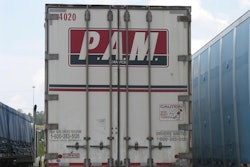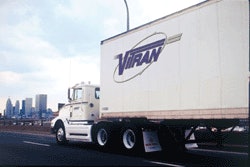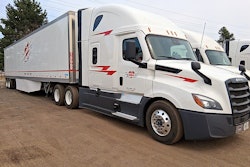
The Federal Motor Carrier Safety Administration on Tuesday, April 27, issued a final rule on annual registration fees and a fee bracket structure for the Unified Carrier Registration (UCR) Agreement for the calendar year beginning Jan. 1, 2010. The rule, effective immediately, was published in the Federal Register.
The minimum fee, which applies to a one-truck operation or to a broker or freight forwarder, will go from $39 to $76, while the maximum fee for for-hire and private carriers with more than 1,000 trucks will rise from $37,500 to $73,346. The 2010 fees are: 0-2 CMVs, $76; 3-5 CMVs, $227; 6-20 CMVs, $452; 21-100 CMVs, $1,576; 101-1,000 CMVs, $7,511; and 1,001 and above, $73,346.
The comment period on the Notice of Proposed Rulemaking published in the Federal Register on Sept. 3, 2009, originally was set to end only 15 days later on Sept. 18, but FMCSA extended it until Sept. 28 in response to multiple requests. The fee increases under the final rule are slightly less than the hike in FMCSA’s NPRM, which used a factor of 2.22. After evaluating comments that opposed inclusion of administrative expenses and a revenue reserve, FMCSA concluded that it was statutorily required to include the administrative expenses, but decided to remove the revenue reserve component from the fee calculations in the final rule.
The agency said several factors drove the need to increase fees in order to provide the $113 million necessary to provide states with the revenues they received under the Single State Registration System. One was a change in federal law in 2008 that eliminated trailers from the calculation; that change alone required an increase in fees to maintain the revenue even if every single carrier complied, FMCSA said.
But compliance with the registration requirement has been far from 100 percent. Between 80 and 90 percent of carriers operating 100 or more trucks have registered under UCR, but the compliance rate among brokers and freight forwarders is only 16 percent, and fewer than 60 percent of single-truck operations have registered; in 2008, the overall compliance rate was 62.5 percent. While industry representatives on the UCR board believe the fees should continue to be based on 100 percent compliance, FMCSA chose a compliance rate of about 86 percent. And on top of those concerns was a phenomenon FMCSA calls “bracket shift,” where carriers end up registering fewer trucks than anticipated based on the federal database.
In comments filed for the NPRM, state enforcement agencies generally supported the fee increase, while the trucking industry generally opposed it. The American Moving & Storage Association strongly opposed the fee proposal as “excessive, inappropriate [and] unwarranted.’’ UPS said the proposed fees represented an “unreasonable rate of increase.’’ The Truckload Carriers Association opposed the proposal because it would “negatively affect the motor carrier industry in order to subsidize both noncompliant motor carriers and the states that will not put forth the effort to increase UCRA [UCR Agreement] compliance.’’ The Transportation Intermediaries Association called FMCSA’s analysis flawed. The American Trucking Associations and TIA both faulted the NPRM for giving an impression of “illusory precision,’’ arguing that “the unwarranted show of accuracy covers much guesswork and some arbitrary assumptions.’’
Some comments argued that sharply increased fees would increase noncompliance, creating a future spiral of state revenue shortfalls and requests for yet higher fees. The Snack Food Association said that placing almost the entire burden of a solution on compliant carriers was unfair and that it was likely that a fee increase of this magnitude would decrease compliance rates. But FMCSA said the final rule provides suitable incentives for states to ramp up enforcement on noncompliant entities “so that they can achieve the full amounts to which they are entitled.”
FMCSA, however, did eliminate the revenue reserve component from the fee increase. ATA said a reserve fund request was unsupported by statute that and the concept “belies the assumed precision that underlies the rest of the fee proposal.” FMCSA said that after three years of experience administering the fees, it “believes that the initial uncertainties prompting inclusion of a revenue reserve have diminished. Both FMCSA and the plan have a greater understanding of the factors that have caused undercollection (such as population definition, compliance rates and bracket shifting) and have adjusted the final rule accordingly. As a result, the plan should face significantly less uncertainty, negating the need for the revenue reserve.”
To view the final rule and comments, go to www.regulations.gov. The docket is FMCSA-2009-0231.














